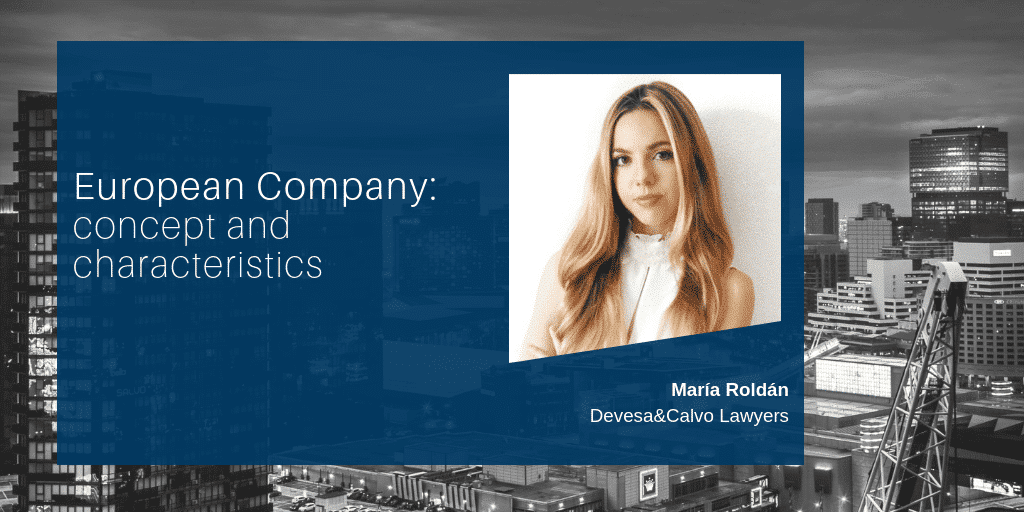
The European Company: concept and characteristics
In order to make everyday life easier for those companies operating in more than one Member State of the European Union, the «Societas Europaea» or European Company (SE) has been created. The constitution of this type of company is always optional, but requires a company –or companies- acting in more than one Member State, instead of limiting its activities in a single local market.
Which are the characteristics of the European Company?
- Name: In accordance with the Council Regulation (EC) No. 2157/2001 of 8 October 2001 on the Statute for a European company (SE), the name of an SE shall always be preceded or followed by the abbreviation “SE”. This acronym is reserved to this type of companies, with the sole exception of those SE registered before the date of entry into force of this regulation. Thus, if a company using the abbreviation “SE” is registered before the referred date, it will not be required to alter its name.
- Capital: The ES is a public limited company. As a consequence, its capital shall be divided into shares and each shareholder will only be responsible for the value of the subscribed capital. This capital must be expressed in euros and shall not be less than EUR 120 000.
- Registered office: The registered office of an SE shall be located within the Community, in the same Member State as its head office.
In case the Company is domiciled in Spain but no longer has its head office in this State, the Company shall rectify its situation within one year. If the term is finished but the rule remains unfulfilled, the Company shall be dissolved.
- Company purpose: There are no limitations on the sectors of economic activity in which an ES can engage. In any case, it should be noted that it is understood that the legislation includes the ES when limiting a sector to the public limited company.
- Associates: There are no restrictions with regard to the number of associates. This means that the SE may have either a sole shareholder (single-member company) or many of them, making a distribution of the capital between the plural partners with no upper limit.
- Registration and publication: General rules for public limited companies regarding registration and publication do also apply to SEs. Accordingly, both registration and publication of the documents and particulars concerning an SE must be done in the manner laid down in the laws of the Member State in which the SE has its registered office.
Consequently, acts and transactions done by an SE domiciled in Spain shall be registered in the Commercial Register responsible for its seat. Besides, its operations may be published in the Official Gazette of the Madrid Companies Registry and, when appropriate, in one of the newspapers with the largest circulation in the province.
Moreover, both registration and deregistration shall be published in the Official Journal of the European Communities, for information purposes.
- Structure of the SE: The organisation of its administration must be implemented through one of the following forms:
- An administrative organ
- A management organ, responsible for the performance of the company, and a supervisory organ, responsible for monitoring the management.
How can a SE be set up?
As it has been said above, it is mandatory for a European Company to be set up within the territory of the European Community, but should not limit its operations to a single national market. Furthermore, it is not allowed for particulars (natural persons) to participate in the moment of constitution of an ES, that must be exclusively comprised of legal entities. There is no regulation to prevent particulars for acquiring shares at a later stage.
In the event of an SE being domiciled in Spain, it should also take into account the national legislation with regard to the involvement of workers: Law 31/2006 about the involvement of workers in the SE and cooperatives in Europe.
After clarifying this point, it should be noted that the legislation narrows the different forms of establishing an ES with a numerus clausus (restricted list) of procedures. Hence, if there is a will of functioning into the market using this type of company, it will be mandatory to set up the society through one of the following procedures of formation:
- Formation by merger: two or more public limited companies can be merged –either by acquisition or formation of new company- in order to form an SE, where the following conditions are met.
a) Both its registered office and head office shall be located within the European Union.
b) At least two of them shall be ruled under the legal system of different Member Estates.
- Formation of a holding SE: both public limited companies and limited-liability companies are able to create an SE such as its parent company, for this to control the others, that will act as subsidiaries. To achieve this aim, the following requirements must be fulfilled.
a) Companies interested in the formation of a holding SE shall have both its registered office and head office located within the European Union.
b) At least two of them shall be ruled under the legal system of different Member Estates; or have, for a minimum of two years, a branch office located in other Member Estate or a subsidiary company ruled under the legal system of a different Member Estate.
- Formation of a subsidiary SE: it is possible to form an SE as a subsidiary of other companies acquiring the shares of the former. For this purpose:
a) Any legal person, whether governed by Public or by Private Law, is capable of forming a subsidiary European Company, with the sole exclusion of those entities not pursuing lucrative gain.
b) Interested societies shall have both its registered office and head office located within the European Union.
c) At least two of them shall be ruled under the legal system of different Member Estates; or have, for a minimum of two years, a branch office located in other Member Estate or a subsidiary company ruled under the Legal System of a different Member Estate.
- Conversion of an existing public limited-liability company into an SE: any corporation which has both its registered office and head office located within the European Union, can be converted into an SE if it has had a subsidiary ruled by other Member State’s Legal System since, at least, two years.
María Roldán
Devesa&Calvo Lawyers
